April 2025
The global basalt fiber market size is accounted at USD 350.64 million in 2025 and is forecasted to hit around USD 913.82 million by 2034, representing a CAGR of 11.23% from 2025 to 2034. The North America market size was estimated at USD 160.77 million in 2024 and is expanding at a CAGR of 11.33% during the forecast period. The market sizing and forecasts are revenue-based (USD Million/Million), with 2024 as the base year.
The global basalt fiber market size was calculated at USD 315.24 million in 2024 and is predicted to increase from USD 350.64 million in 2025 to approximately USD 913.82 million by 2034, expanding at a CAGR of 11.23% from 2025 to 2034. Surging demand for basalt fiber from various end-use industries is the key factor driving the market growth. Also, increasing demand for sustainable materials coupled with technological advancements in the field can fuel market growth further.
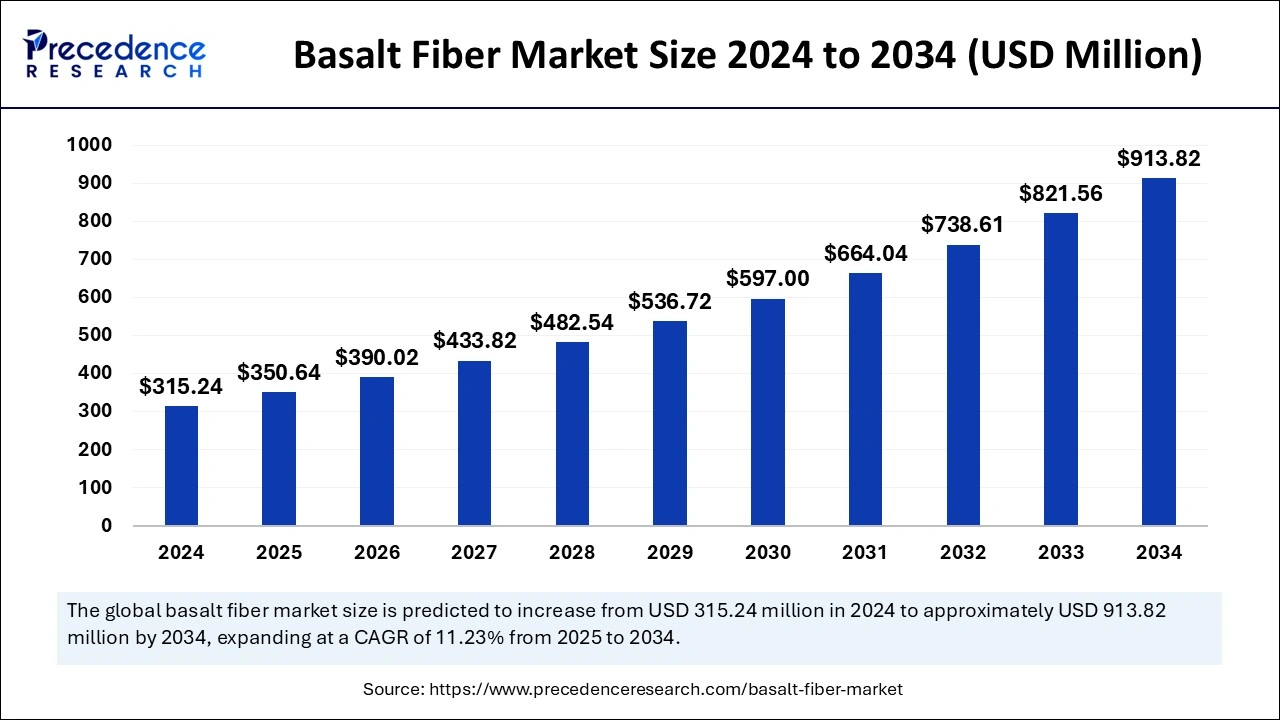
Artificial intelligence is playing a significant role in the basalt fiber market development by improving manufacturing efficiency and product quality. AI-powered technologies can be used to streamline the production process, ensure persistent product properties, and forecast maintenance needs. Furthermore, AI in production lines decreases labor costs and reduces human error, which can lead to great accuracy in fiber manufacturing.
The Asia Pacific basalt fiber market size was exhibited at USD 160.77 million in 2024 and is projected to be worth around USD 470.62 million by 2034, growing at a CAGR of 11.33% from 2025 to 2034.
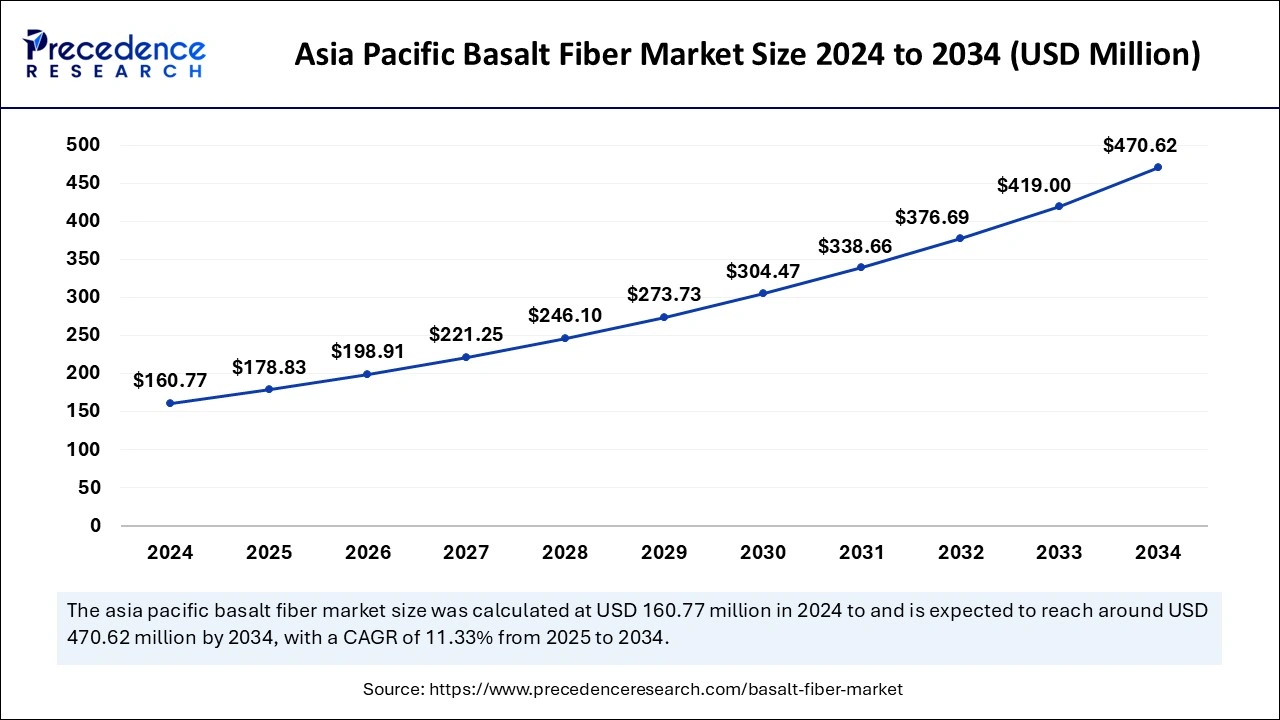
Asia Pacific dominated the global basalt fiber market in 2024. The dominance of the region can be attributed to the increasing use of basalt fiber across various industries such as wind energy, building and construction, electrical and electronics, and automotive. Furthermore, the industrial development in emerging economies such as China and India are propelling the market growth. The region's emphasis on environmental sustainability and renewable energy sources further boosts the demand for basalt fiber, particularly in applications associated with electrical insulation and wind energy.
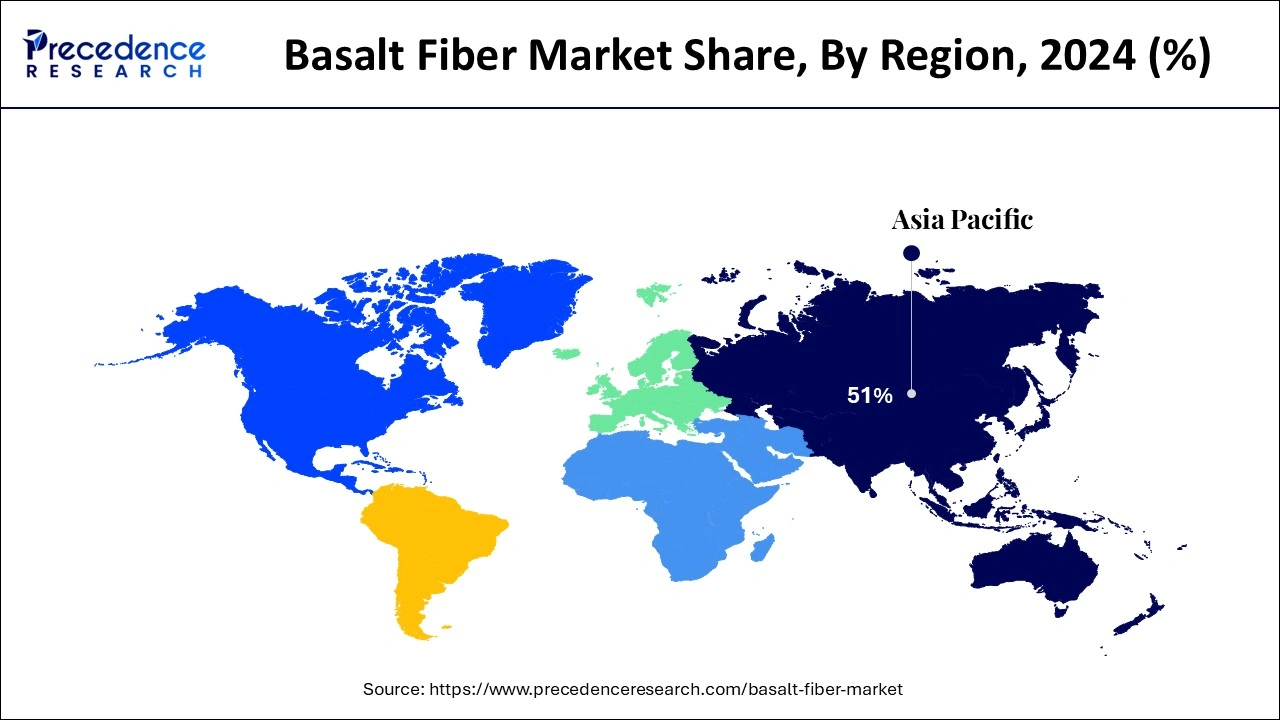
North America is expected to grow at the fastest rate in the basalt fiber market over the studied period. The growth of the region can be credited to the strong presence of numerous electronic production bases in the region, particularly in the U.S., srging infrastructure investments in the region are fuelling demand for sustainable, next-generation construction materials such as basalt fiber. In North America, the U.S. led the market owing to the technological advancements in the field coupled with the lower production costs required for basalt fiber manufacturing.
Basalt fiber is made from very thin fibers of basalt. This fiber can be found in some important minerals like plagioclase, pyroxene, and olivine. Products made from basalt fiber serve as fire-resistant textiles in both the aerospace and automotive sectors, and they may also be employed as composites in manufacturing items such as camera tripods. It is also found in wide applications in pipe containers, reinforced nets, and plastic basalt products. It is the same as fiberglass and also has better mechanical and physical properties than fiberglass but is way more inexpensive than carbon fiber.
| Report Coverage | Details |
| Market Size by 2034 | USD 913.82 Million |
| Market Size by 2025 | USD 350.64 Million |
| Market Size in 2024 | USD 315.24 Million |
| Market Growth Rate from 2025 to 2034 | CAGR of 11.23% |
| Dominated Region | Asia Pacific |
| Fastest Growing Market | North America |
| Base Year | 2024 |
| Forecast Period | 2025 to 2034 |
| Segments Covered | Usage, End-Use, and Regions |
| Regions Covered | North America, Europe, Asia-Pacific, Latin America, and Middle East & Africa |
The rising usage of basalt fibers as a substitute
Basalt fibers possess good mechanical strength, heat and chemical resistance, insulation, and other qualities. The properties, including corrosion and lightweight resistance, enable the increased use of basalt fibres without requiring specialist equipment such as lifting, etc. In addition, the growing utilization of basalt fibers as a substitute for steel reinforcements is expected to impact the basalt fiber market positively.
High production cost
The raw material necessary to manufacture the basalt fiber is igneous rocks but the process of transforming the rocks into fine fiber is as difficult as that of glass fiber. The manufacturing involves the preparation of melting of the stones and other raw materials, spinning of the fibers, and lastly, the application of its size. Moreover, all these processes increase production costs, which makes them more expensive than carbon fibers and glass fibers, hindering the basalt fiber market.
Ongoing material innovations and substitution
The diversity of basalt fiber is the major basalt fiber market trend boosting the market growth. The increasing product use as an effective substitute to steel and other fiber growth in manufacturing lightweight components for the demanding aerospace and automotive industries is creating opporutunties for the market in the near future. Furthermore, the increasing product innovations like the emergence of basalt fiber-reinforced plastic (BFRP).
The composite segment dominated the basalt fiber market in 2024. The dominance of the segment can be attributed to the increasing use of basalt fiber in composite applications. In this application basalt fiber acts as a reinforcement material in the manufacturing of composite structures, providing durability, exceptional strength, and corrosion protection. Additionally, its extensive usage in composite production, especially in industries such as aerospace, construction, automotive, and marine underscores its importance in the segment.
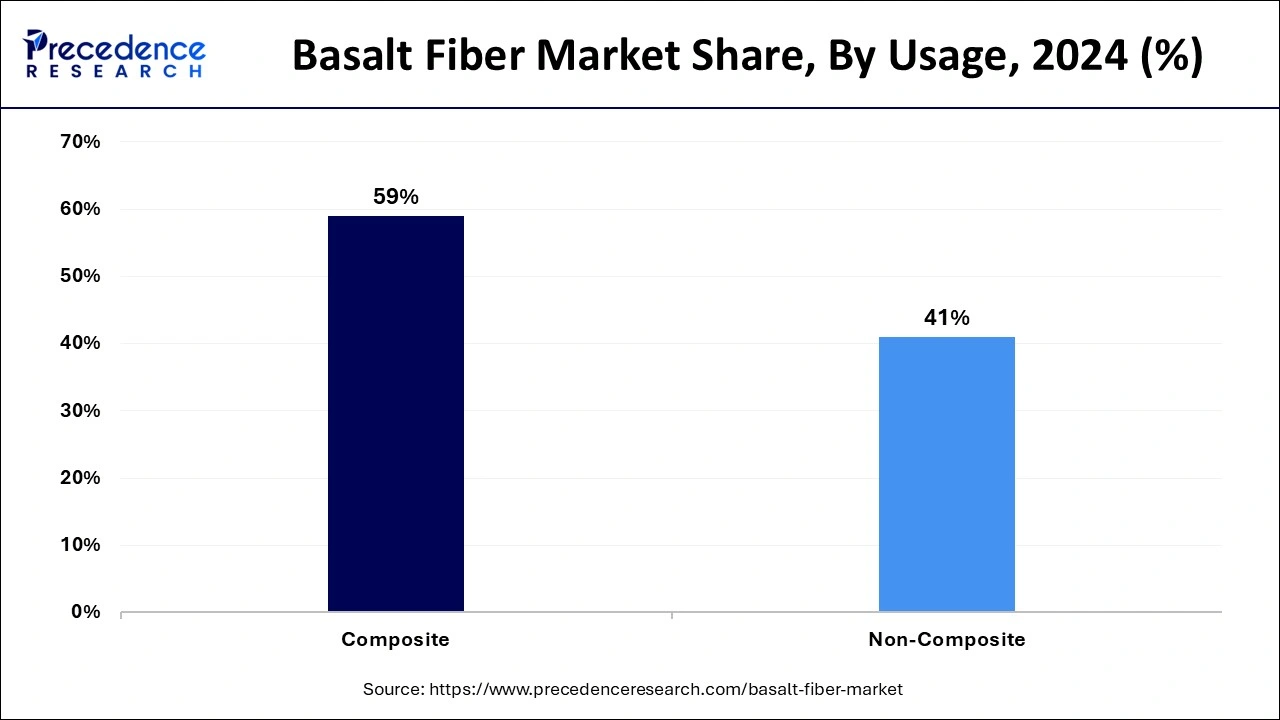
The noncomposite segment is expected to grow at the fastest rate over the forecast period. The growth of the segment can be linked to the rising adoption of basalt fibers in non-composite applications, as these fibers find utility in different forms, including yarn, fabrics, and tapes, acting as a filtration, insulation, and reinforcement elements across industries such as insulation, textile, and filtration. Also, the dual functionality of basalt fiber over composite and non-composite settings boot the market.
The building and construction segment led the global basalt fiber market in 2024. The growth of the segment can be credited to the distinctive properties of the material, which makes it suitable for many applications. Basalt fiber's thermal resistance, high tensile strength, and corrosion resistance make it ideal for reinforcing concrete structures, thereby improving their durability. Furthermore, basalt fiber possesses good fire resistance properties, making it crucial for applications like partitions, fire-resistant doors, and cladding systems to improve the safety of the building.
The automotive and transportation segment is anticipated to grow at the fastest rate during the projected period. The growth of the segment can be driven by the increasing utilization of carbon fiber products in the aerospace and automotive sectors due to the weight reduction factor. Moreover, ongoing urbanization, the surge in consumer income along with the increasing demand for public and private transportation are impacting the segment's growth positively. Basalt fiber-reinforced composites are used in automotive production for components like interior trim, body panels, and chassis reinforcement.
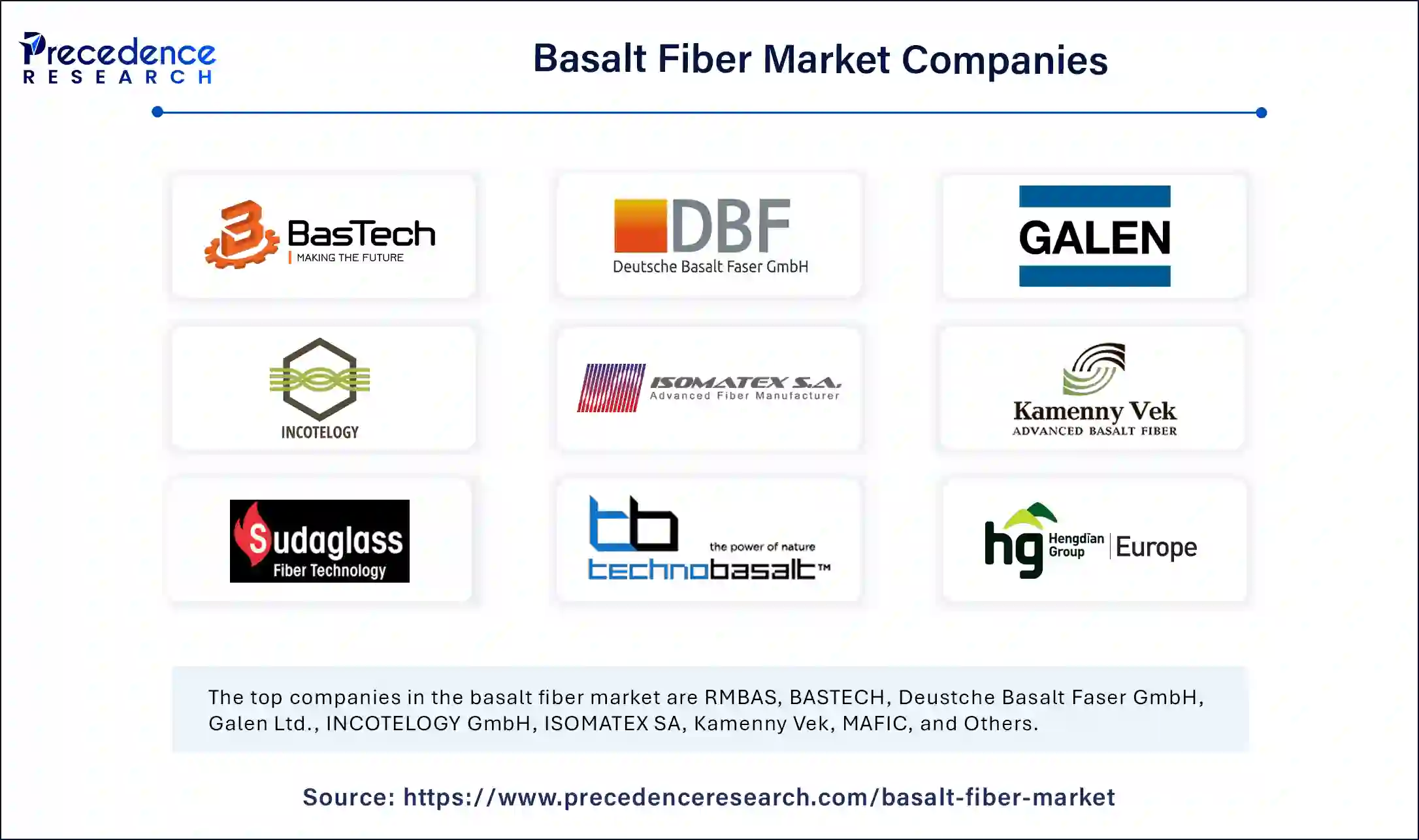
By Usage
By End-Use
By Geography
For inquiries regarding discounts, bulk purchases, or customization requests, please contact us at sales@precedenceresearch.com
No cookie-cutter, only authentic analysis – take the 1st step to become a Precedence Research client
April 2025
September 2024
September 2024
January 2025